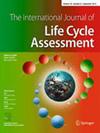Towards use of life cycle–based indicators to support continuous improvement in the environmental performance of avocado orchards in New Zealand
IF 5.4
3区 环境科学与生态学
Q2 ENGINEERING, ENVIRONMENTAL
引用次数: 0
Abstract
Abstract Purpose A life cycle assessment (LCA) study was undertaken for the orchard stage of the NZ avocado value chain, to guide the development of indicators for facilitating continuous improvement in its environmental profile. Methods The functional unit (FU) was 1 kg Hass avocados produced in NZ, up to the orchard gate. The baseline model assessed avocados produced in fully productive orchards, using input data collected from 49 orchards across 281 ha in the three main avocado growing regions of New Zealand. In addition, the non-productive and low production years of avocado orchards were assessed using data from four newly established avocado operations spread across 489 ha. Climate change, eutrophication, water use, freshwater ecotoxicity and terrestrial ecotoxicity results were calculated for each orchard. Finally, national scores were calculated for each impact category from the weighted averages of the individual orchard results in the baseline sample of the three studied regions. Results There was significant variability between orchards in different input quantities, as well as impact scores. The impact assessment results showed that fuel use and fertiliser/soil conditioner production and use on orchard were consistently the main hotspots for all impact categories except water use, where impacts were generally dominated by indirect water use (irrespective of whether the orchards were irrigated or not). When considering the entire orchard lifespan, the commercially productive stage of the orchard life contributed the most to all impact category results. However, the impacts associated with 1 kg avocados, when allocated based on the total impacts across the orchard lifespan, were 13–26% higher than the baseline results which considered only the commercially productive years of the orchard life. Conclusion The study identified the priority areas for focussed improvement efforts (in particular, fertiliser and fuel use for all impact categories, and agrichemical use for the ecotoxicity impacts). Second, the regional- and national-level impact scores obtained in this study can be used as benchmarks in indicator development to show growers their relative ranking in terms of environmental performance. When using the indicators and benchmarks in a monitoring scheme, consideration should be given to developing separate benchmarks (using area-based functional units) for young orchards. It will also be necessary to develop a better understanding of the reasons for the variability in inputs and impacts so that benchmarks can be tailored to account fairly and equitably for the variability between orchards and regions.使用基于生命周期的指标来支持新西兰鳄梨果园环境绩效的持续改善
摘要目的对新西兰鳄梨价值链的果园阶段进行生命周期评估(LCA)研究,以指导指标的制定,促进其环境状况的持续改善。方法功能单位(FU)为1 kg新西兰哈斯牛油果,直至果园大门。基线模型使用从新西兰三个主要鳄梨种植区281公顷的49个果园收集的输入数据,评估了充分生产的鳄梨。此外,利用分布在489公顷的四个新建立的牛油果操作的数据,对牛油果果园的非生产和低生产年份进行了评估。计算每个果园的气候变化、富营养化、水资源利用、淡水生态毒性和陆地生态毒性结果。最后,从三个研究区域的基线样本中单个果园结果的加权平均值计算每个影响类别的国家得分。结果不同投入量的果园间存在显著差异,影响评分也存在显著差异。影响评价结果表明,果园燃料使用和肥料/土壤调节剂的生产和使用一直是除用水影响外的所有影响类别的主要热点,其中间接用水影响普遍占主导地位(无论果园是否灌溉)。当考虑整个果园生命周期时,果园生命周期的商业生产阶段对所有影响类别的结果贡献最大。然而,当根据整个果园生命周期的总影响进行分配时,与1公斤鳄梨相关的影响比仅考虑果园商业生产年限的基线结果高出13-26%。该研究确定了重点改进工作的优先领域(特别是所有影响类别的化肥和燃料使用,以及生态毒性影响的农业使用)。其次,本研究获得的区域和国家层面的影响得分可以作为指标制定的基准,以显示种植者在环境绩效方面的相对排名。在监测方案中使用指标和基准时,应考虑为幼小果园制定单独的基准(使用基于区域的功能单位)。还必须更好地了解投入和影响方面的差异的原因,以便能够调整基准,公平公正地考虑果园和区域之间的差异。
本文章由计算机程序翻译,如有差异,请以英文原文为准。
求助全文
约1分钟内获得全文
求助全文
来源期刊
CiteScore
10.60
自引率
10.40%
发文量
100
审稿时长
8-16 weeks
期刊介绍:
The International Journal of Life Cycle Assessment (Int J Life Cycle Assess) is the first journal devoted entirely to Life Cycle Assessment and closely related methods. LCA has become a recognized instrument to assess the ecological burdens and impacts throughout the consecutive and interlinked stages of a product system, from raw material acquisition or generation from natural resources, through production and use to final disposal. The Int J Life Cycle Assess is a forum for scientists developing LCA and LCM (Life Cycle Management); LCA and LCM practitioners; managers concerned with environmental aspects of products; governmental environmental agencies responsible for product quality; scientific and industrial societies involved in LCA development, and ecological institutions and bodies.

 求助内容:
求助内容: 应助结果提醒方式:
应助结果提醒方式:


